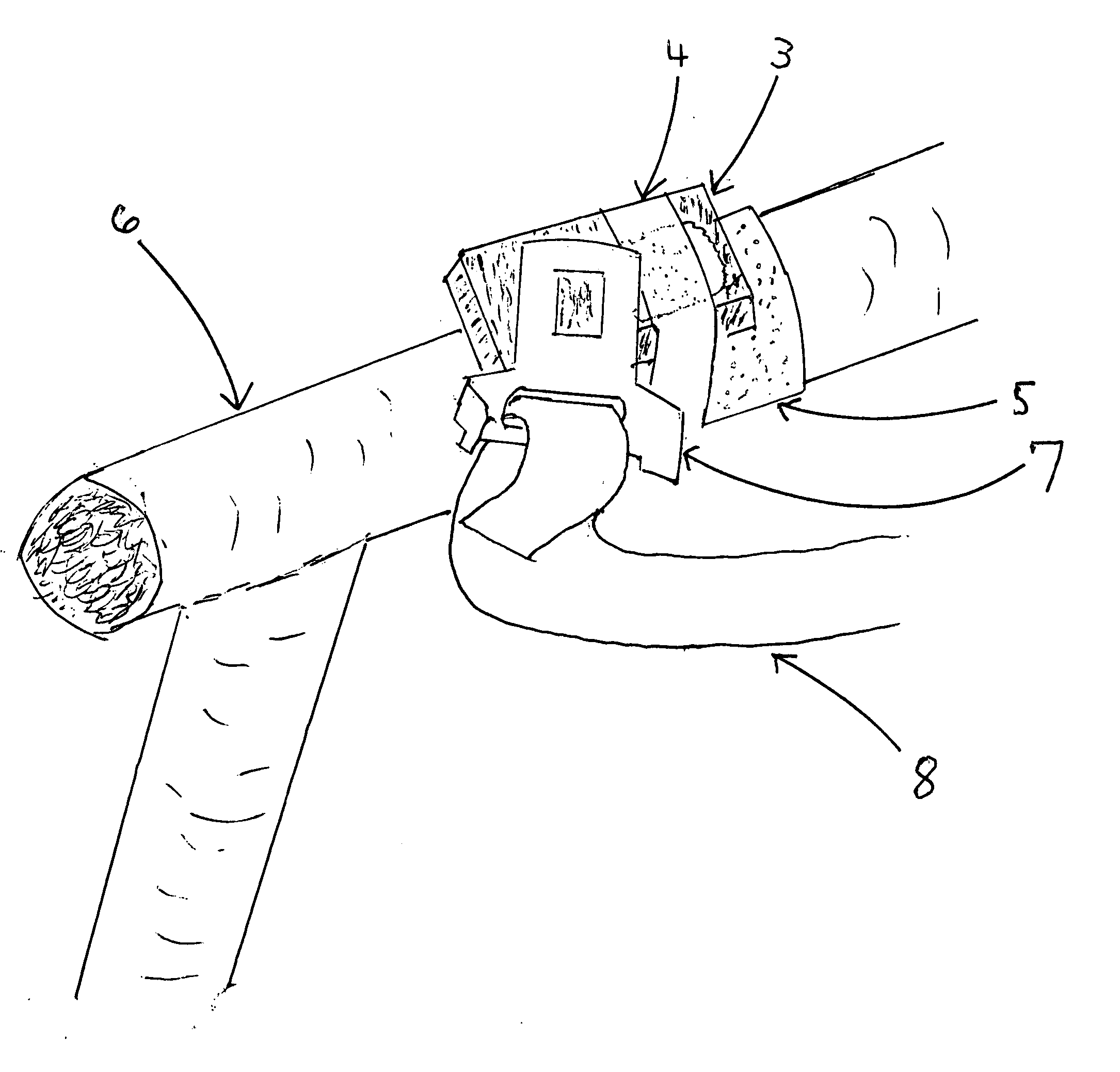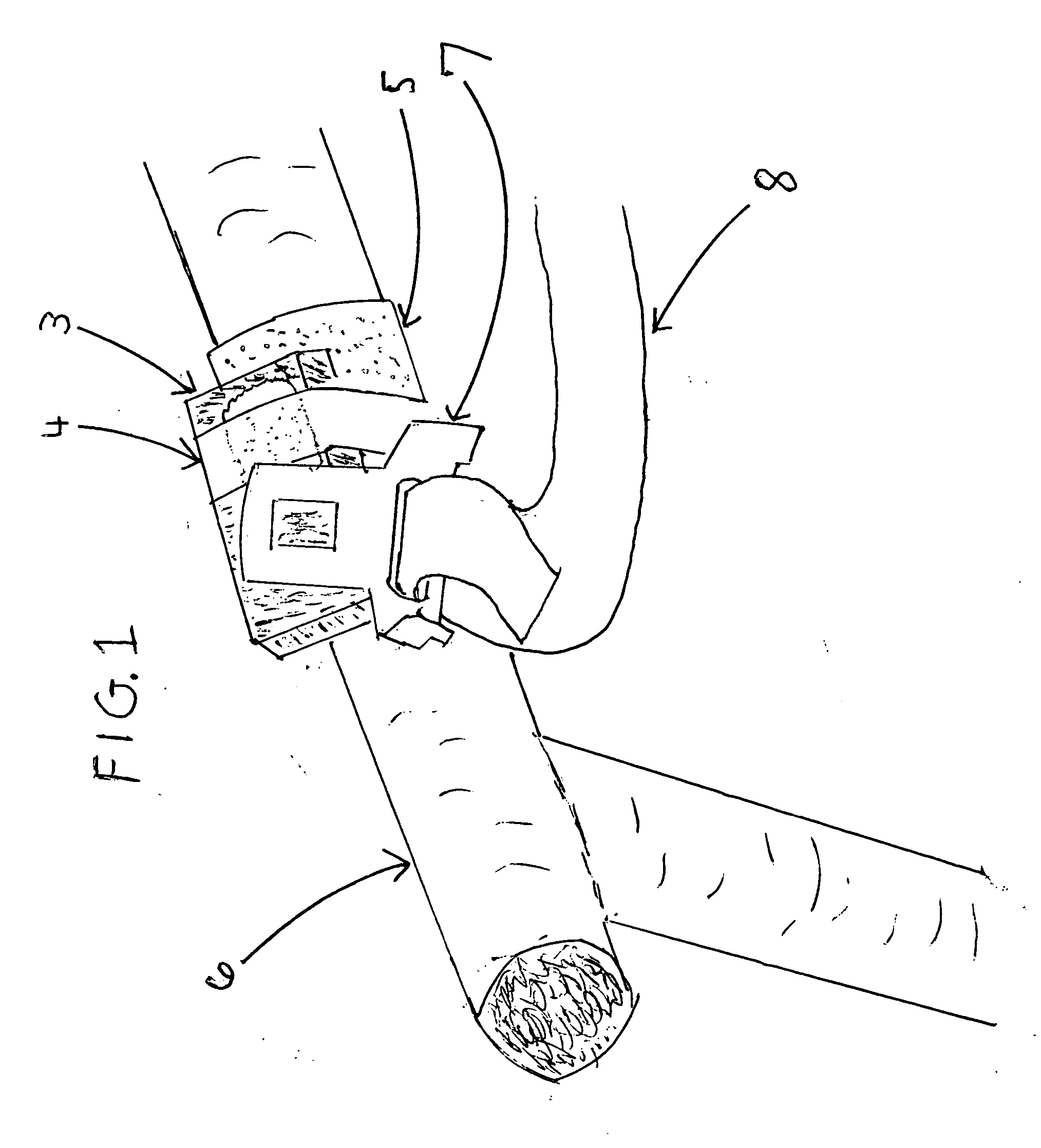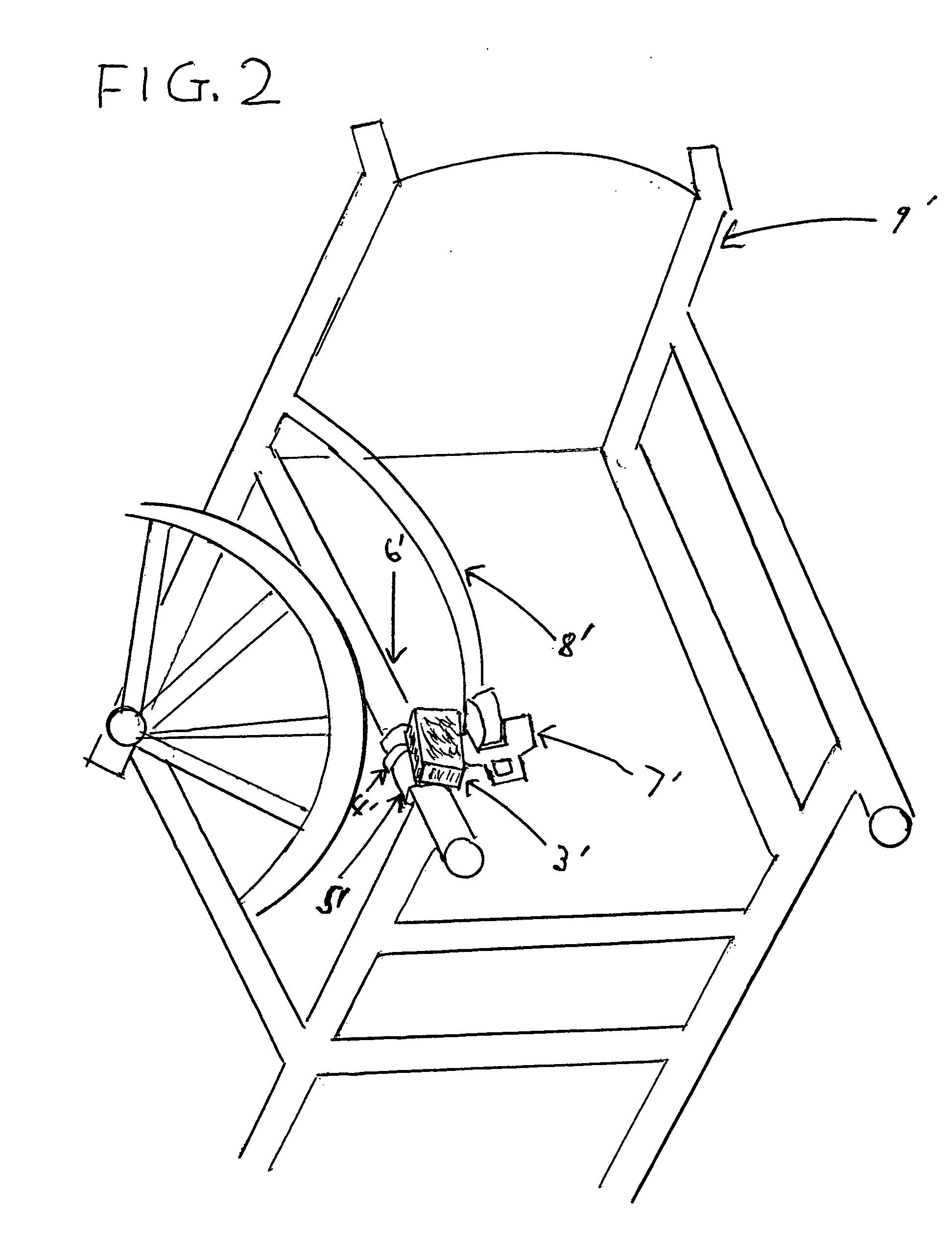Magnetic wheelchair seating belt storage system
a magnetic wheelchair and belt technology, applied in the field of wheelchair seat belt storage system, can solve the problems of user's inability to regain the grasp of their wheelchair seat belt, falling out of reach, and the retractable seat belt system does not provide resistance-free belt movement, so as to achieve the effect of increasing the independence of managing
- Summary
- Abstract
- Description
- Claims
- Application Information
AI Technical Summary
Benefits of technology
Problems solved by technology
Method used
Image
Examples
Embodiment Construction
[0013] Referring now to the drawing in which like numbers indicate elements throughout, FIG. 1 shows a preferred embodiment of a magnetic wheelchair seating belt storage system in accordance with the present invention.
[0014] A ceramic magnet 3 is attached with adhesive to a hook loop fastening strip 4. A loop fastening strip 5 is attached with adhesive to wheelchair armrest 6 in a location chosen to accommodate the wheelchair user's motor skills. Hook fastening strip 4 is attached to the loop fastening strip 5 to hold ceramic magnet 3 adjacent to the chosen site of magnet attachment. Ferrous based wheelchair positioning buckle 7 is in contact with ceramic magnet 3. Wheelchair seating belt 8 is wound through wheelchair positioning belt buckle 7, and thus wheelchair positioning belt 8 is held in secure and convenient storage.
[0015]FIG. 2 is a broader perspective view of a preferred embodiment to illustrate the present invention in context with the full wheelchair seat. In this case ...
PUM
 Login to View More
Login to View More Abstract
Description
Claims
Application Information
 Login to View More
Login to View More - R&D
- Intellectual Property
- Life Sciences
- Materials
- Tech Scout
- Unparalleled Data Quality
- Higher Quality Content
- 60% Fewer Hallucinations
Browse by: Latest US Patents, China's latest patents, Technical Efficacy Thesaurus, Application Domain, Technology Topic, Popular Technical Reports.
© 2025 PatSnap. All rights reserved.Legal|Privacy policy|Modern Slavery Act Transparency Statement|Sitemap|About US| Contact US: help@patsnap.com



